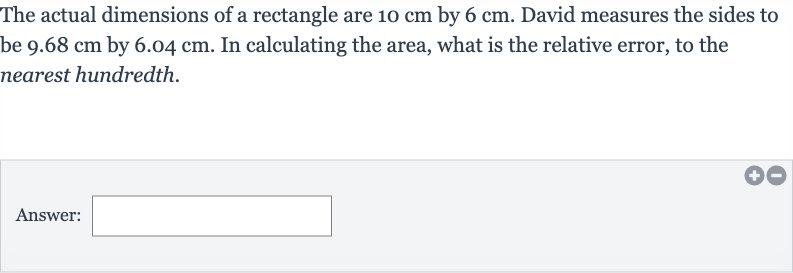Full solution
Q. The actual dimensions of a rectangle are by . David measures the sides to be by . In calculating the area, what is the relative error, to the nearest hundredth.Answer:
- Calculate Actual Area: Calculate the actual area of the rectangle using the actual dimensions.The formula for the area of a rectangle is .Actual area = .
- Calculate Measured Area: Calculate the measured area of the rectangle using the measured dimensions.Measured area = .Let's perform the multiplication to find the measured area.Measured area = .
- Calculate Absolute Error: Calculate the absolute error by subtracting the actual area from the measured area.Absolute error = .Absolute error = .Absolute error = .Since we are looking for the absolute value, we take the positive value of the result.Absolute error = .
- Calculate Relative Error: Calculate the relative error by dividing the absolute error by the actual area and then multiplying by to get the percentage...Let's perform the division and multiplication to find the relative error...
- Round Relative Error: Round the relative error to the nearest hundredth.Relative error .
More problems from Percent error: word problems
QuestionGet tutor help
QuestionGet tutor help
QuestionGet tutor help
QuestionGet tutor help
QuestionGet tutor help
QuestionGet tutor help
QuestionGet tutor help
QuestionGet tutor help
QuestionGet tutor help

